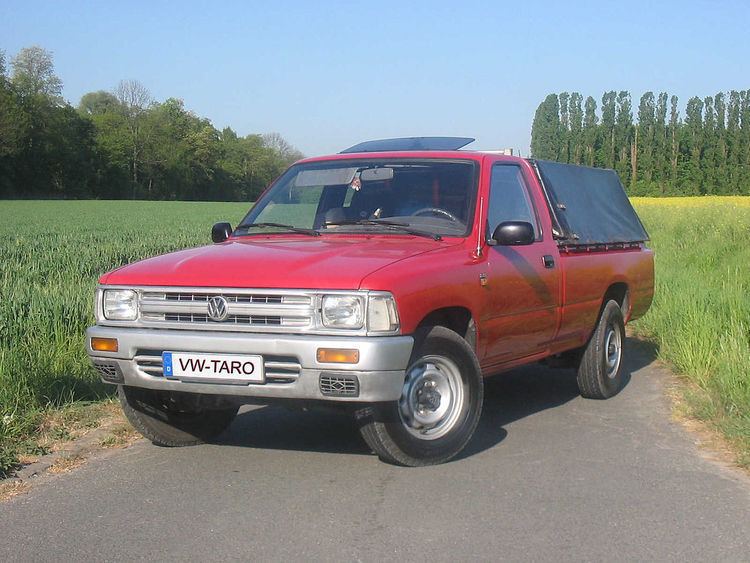Body style Pickup van | ||
 | ||
Manufacturer Volkswagen Commercial VehiclesToyotaHino Production February 1989–March 1997 Layout Longitudinal front engine;rear-wheel drive (4x2), orfour-wheel drive (4x4) | ||
In January 1989, Volkswagen Commercial Vehicles introduced a 1 tonne pickup truck, called the Volkswagen Taro, to complement the half tonne Caddy pickup / panel van ranges, and the 1 tonne Transporter van and chassis cab ranges. The name "tarō" is a suffix used in Japanese to denote the oldest brother or son, or the first-born son of a family.
Contents
The Taro though, was a project of badge engineering. The Taro was a rebadged Toyota Hilux - fully engineered and designed by Toyota. The two companies came together in an effort to solve each other's problems:
So in the late 1980s, Volkswagen Group and Toyota signed an agreement that Volkswagen Commercial Vehicles would assemble the Toyota Hilux at its VWCV factory in Hanover, Germany, and it would be sold under the Volkswagen Taro moniker.
The first Taros manufactured in Hanover, Germany, from 1989-1994 had a 2.4-litre diesel engine with 61 kW (83 PS; 82 bhp), torque was 165 N·m (122 lbf·ft) at 2,400 rpm, with loading space of 3.4 square metres (37 sq ft) and a 1,125 kilograms (2,480 lb) payload. It was only built with two-wheel drive and a regular cab, although the "Taro" moniker was used for other versions in other European markets.
In September 1994 at the IAA Nutfahrzeuge (Commercial Vehicle Fair) in Hanover, Germany, Volkswagen released the four-wheel drive version of the Taro which had an extended cabin. The 4x4 Extended Cab Taro was manufactured in Toyota's Tahara plant in Japan, but now the Taro had an updated 2.4-litre diesel engine which produced 58 kilowatts (79 PS; 78 bhp) at 4,000 rpm and torque of 163 newton metres (120 lbf·ft) at 2,400 rpm. The 4x4 Taro had a 2.9 square metres (31 sq ft) loading space and 815 kilograms (1,797 lb) payload, but could tow 750 kilograms (1,653 lb) without brakes, and 2,100 kilograms (4,630 lb) with brakes.
The joint venture ended in 1997, due to sales failing to meet either car marques expectations.
Specifications
Specifications Source
Future Pick-Up
Volkswagen Commercial Vehicles division sells the Volkswagen Amarok pick-up. It rivals the Nissan Navara and Toyota Hilux.
It will have Single & Double Cab options as well as the option of 2WD or 4WD.
